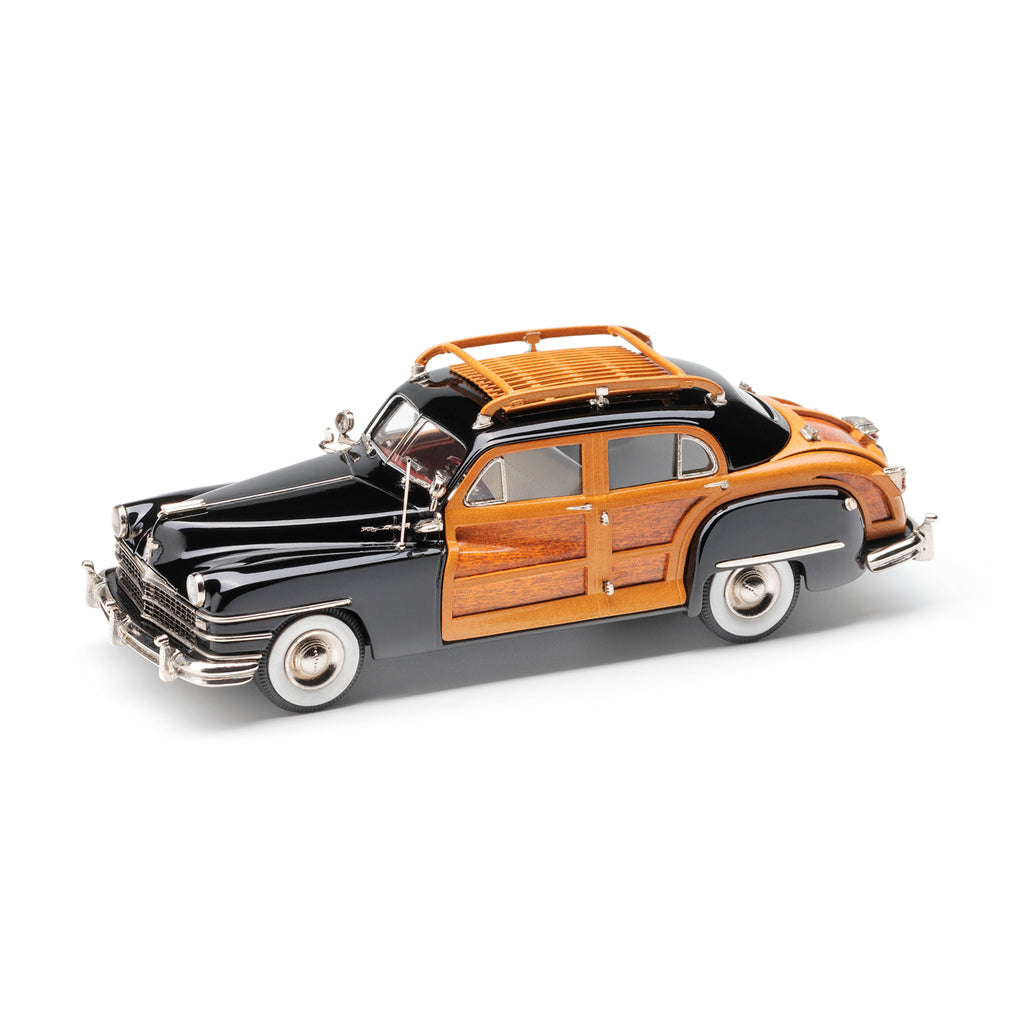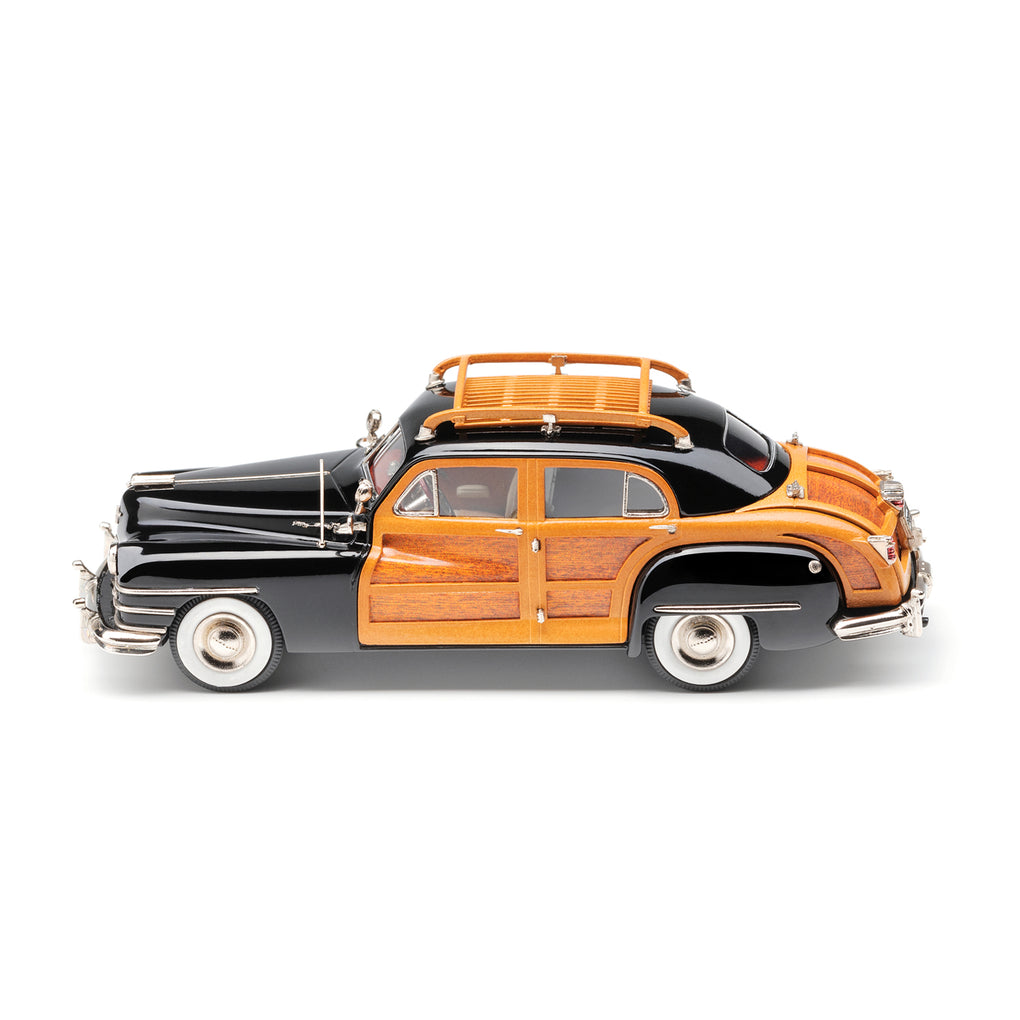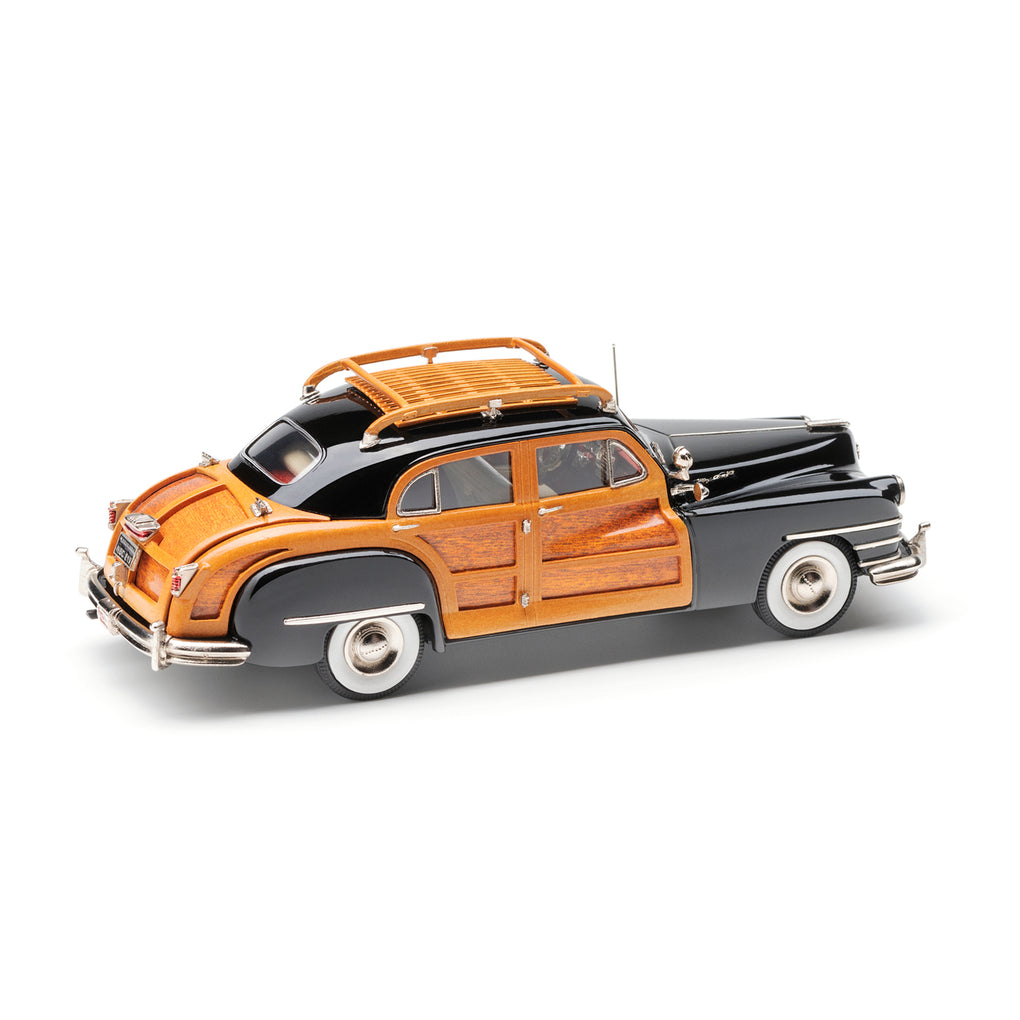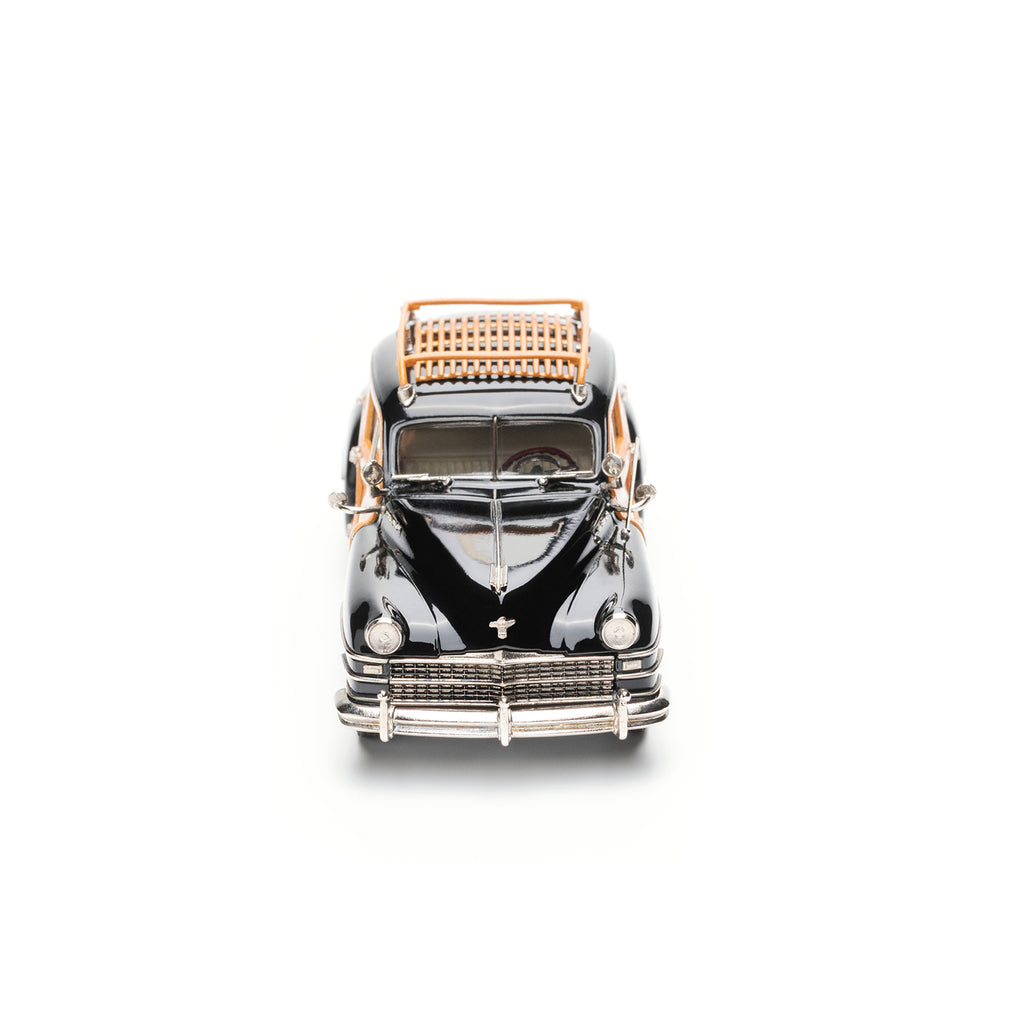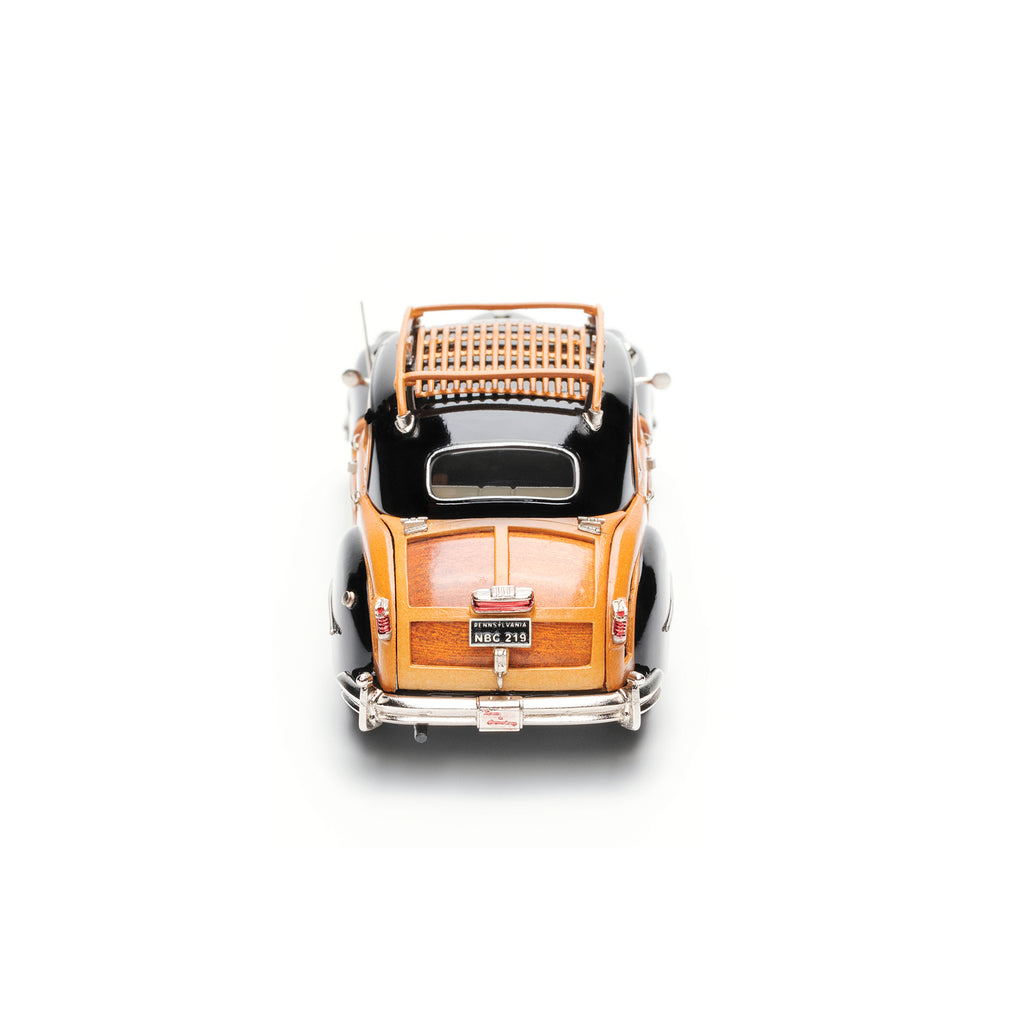1947 Chrysler Town & Country 4 Dr Sedan
SKU: NBC14
AVAILABILITY: In stock (4 items)
BODY TYPE: Sedan
MAKER: Chrysler
COLOR: Black
MEASURE: 130mm or 5 ¼ inch
SCALE: 1:43
YEAR: 1947
DECADE: 40
The Beautiful Chrysler
You get the good things first from Chrysler
The first Chrysler product to carry the Town & Country name was a barrel-back wood-bodied sedan that appeared in 1941. The exposed wood structure of ash and rich Honduran mahogany, all carefully joined and finished in clear varnish like a fine wooden boat, made a real statement. Up until that time, wood bodies were almost exclusively used on station wagons, strictly utilitarian, not something of interest to the vast majority of the car buying public. Chrysler used the exposed wood construction technique to create a well-appointed, sophisticated and even elegant car intended to draw wealthier customers into Chrysler showrooms. The front of the car was standard Chrysler sheetmetal with the back 2/3 of the car in wood. Hence the Town & Country name, town up front, country in the back.
At the conclusion of the Second World War, automobile manufacturers quickly shifted from production of war materials to production of cars to meet the huge demand the war created. Chrysler reintroduced the Town & Country but this time as a stylish convertible and a matching sedan both of which mimicked the shape of the regular production cars on which they were based. Chrysler had intended to produce an entire line of Town & County cars with both 2-door and 4-door sedans, a 3-passenger roadster, a hardtop and 4-passenger convertible but only the 4-door sedan and convertible were produced.
The convertibles were part of the New Yorker series with 8-cylinder engines and 127.5 inch wheelbase but the sedan was on the mid-level Windsor chassis with six-cylinder engines and 121.5 inch wheelbase. Both cars had a fluid drive transmissions.
The Town & Country Sedan had a base price of $2366. The option list was extensive with no less than four heater and ventilation systems to choose from, Highlander plaid interiors, two types of radios, three types of antennas, spotlights and a host of convenience items. Ironically whitewall tires were not initially a factory offering as they were hard to get and expensive immediately after the war.

